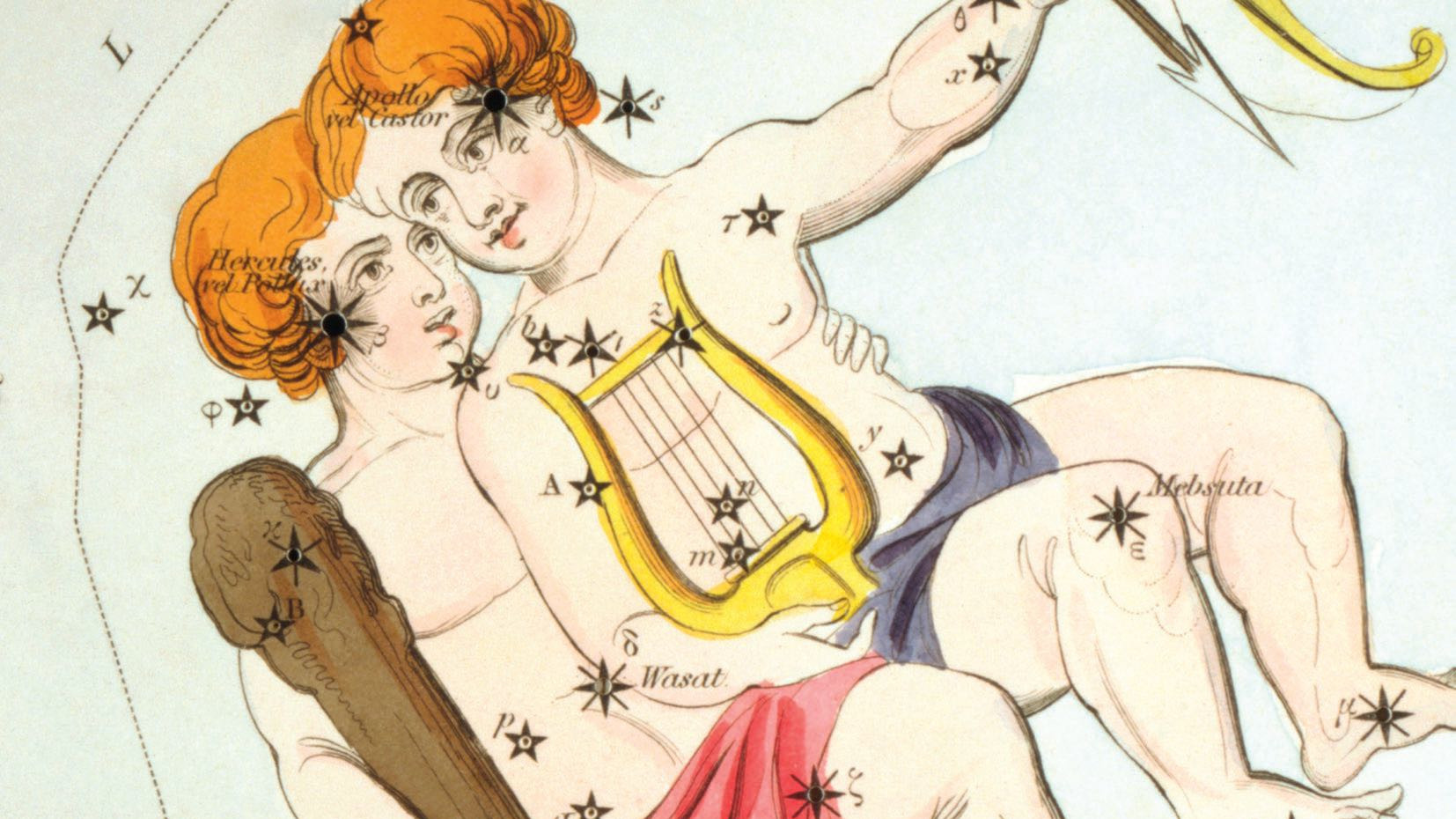Gemini
The open cluster Messier 35 and the Eskimo Nebula are all the proof you need: Gemini has a soft spot for deep sky fans.
 Castor (top) and Pollux (bottom) are the two inseparable twin brothers.
Castor (top) and Pollux (bottom) are the two inseparable twin brothers.Castor (α Gem) and Pollux (β Gem), the two brightest stars in the constellation of Gemini, are also among the 25 brightest stars in the entire night sky. Whereas Castor, the westerly of the twin stars, is a unique sextuple star system, three components of which can be observed with a 100-mm telescope (the others cannot be observed optically), Pollux, its brighter neighbour, is – as was proved ten years ago – the home of an extrasolar gas giant. From these two bright heads, two rows of prominent stars connect in a south-westerly direction, with γ and η Gem representing the bright feet of the pair of twins.
Two from one egg
This constellation represents the Dioscuri, an inseparable pair of brothers who, as so often in the world of Greek myths, were the result of one of Zeus' famous love affairs. Polydeuces (Latin: Pollux) was the son of Leda and the Father of the Gods, who appeared to Leda in the form of a swan, whereas Castor was fathered by her husband on the same night. Accounts of their birth vary, with some stories saying they were born from two eggs, whereas sometimes only one egg is mentioned.
When Castor died in an ambush, Pollux begged his father Zeus to let him die too, despite his divine immortality, so that he could follow his brother into the kingdom of the dead. Finally, Zeus allowed him to henceforth spend his days together with Castor, alternately in Hades and on Mount Olympus, and since then the twins stand high in the winter sky as a symbol of sibling love.
M35 and a hot Eskimo
The star-filled open cluster M35 is considered to be the most beautiful deep sky object in Gemini. Under a dark sky, the cluster, which is located near star η Gem which forms one of the twins’ feet, has many stars which are even visible through binoculars. With a 100-mm telescope you’ll be able to see more than 100 stars in M35, although the neighbouring cluster NGC 2158 will remain only a nebulous glimmer, because its resolution is reserved for larger telescopes.
Another must-see on any tour of Gemini is the Eskimo Nebula, NGC 2392, close to δ Gem. This is a planetary nebula, the remnants of a sun-like star. These nebulae are illuminated by strong UV radiation from their central star. The core of this former star is the bright central star, 40,000°C hot, so this Eskimo is anything but freezing. This 10th magnitude bright white dwarf star can be observed with a small telescope, and you will also be able to observe the surrounding nebula at high magnification. The greater the aperture used, the more detail will become visible, seen as subtle graduations in brightness.
 Outline map of the constellation of Gemini with our observing recommendations. J. Scholten
Outline map of the constellation of Gemini with our observing recommendations. J. ScholtenAuthor: Nico Schmidt / Licence: Oculum-Verlag GmbH
